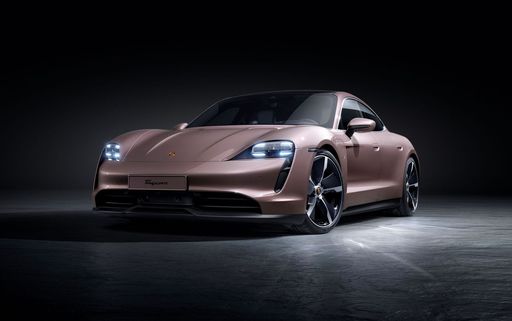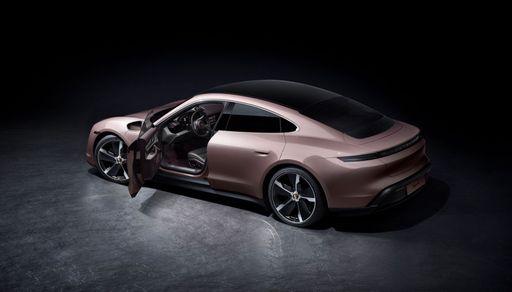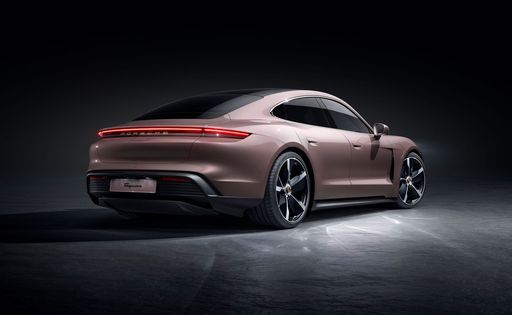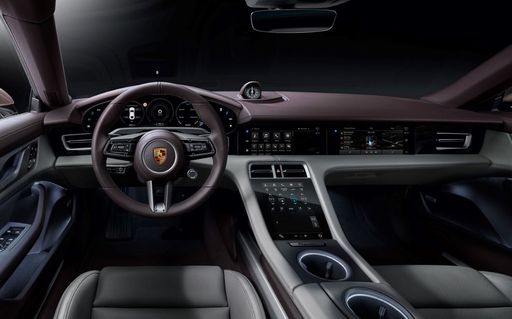Toyota Mirai vs Porsche Taycan – Differences & prices compared
Compare performance, boot space, consumption and price in one view.
Find out now: which car is the better choice for you – Toyota Mirai or Porsche Taycan?
The Toyota Mirai (Sedan) comes with a Hydrogen engine and Automatic transmission. In comparison, the Porsche Taycan (Coupe) features a Electric engine with Automatic transmission.
When it comes to boot capacity, the Toyota Mirai offers 300 L, while the Porsche Taycan provides 407 L – depending on how much space you need. If you’re looking for more power, decide whether the 182 HP of the Toyota Mirai or the 1034 HP of the Porsche Taycan suits your needs better.
In terms of consumption, the values are per 100 km for the Toyota Mirai, and 16.70 kWh for the Porsche Taycan.
Price-wise, the Toyota Mirai starts at 58700 £, while the Porsche Taycan is available from 87900 £. Compare all the details and find out which model fits your lifestyle best!
Toyota Mirai
The Toyota Mirai represents a groundbreaking step in hydrogen fuel cell technology, offering an eco-friendly alternative to traditional petrol engines. Its sleek design and futuristic aesthetic make it a standout on the road, while the interior combines comfort with cutting-edge features. With its impressive range and quick refuelling capabilities, the Mirai is paving the way for the future of sustainable motoring.
details @ Toyota
@ Toyota
Porsche Taycan
The Porsche Taycan redefines the electric vehicle landscape with its stunning design and thrilling performance. With its smooth lines and athletic stance, this four-door sports car captures attention while delivering an exhilarating driving experience. Inside, the Taycan boasts a luxurious and high-tech interior, seamlessly blending comfort and cutting-edge innovation.
details @ Porsche
@ Porsche
 @ Porsche
@ Porsche
 @ Porsche
@ Porsche
 @ Porsche
@ Porsche
 @ Porsche
@ Porsche

|

|
|
|
|
Costs and Consumption |
|
|---|---|
|
Price
58700 - 66700 £
|
Price
87900 - 206700 £
|
|
Consumption L/100km
-
|
Consumption L/100km
-
|
|
Consumption kWh/100km
-
|
Consumption kWh/100km
16.7 - 20.7 kWh
|
|
Electric Range
650 km
|
Electric Range
552 - 680 km
|
|
Battery Capacity
-
|
Battery Capacity
82.3 - 97 kWh
|
|
co2
-
|
co2
0 g/km
|
|
Fuel tank capacity
5 L
|
Fuel tank capacity
-
|
Dimensions and Body |
|
|---|---|
|
Body Type
Sedan
|
Body Type
Coupe
|
|
Seats
5
|
Seats
4
|
|
Doors
4
|
Doors
4
|
|
Curb weight
1900 - 1930 kg
|
Curb weight
2165 - 2370 kg
|
|
Trunk capacity
300 L
|
Trunk capacity
326 - 407 L
|
|
Length
4975 mm
|
Length
4962 - 4968 mm
|
|
Width
1885 mm
|
Width
1966 - 1998 mm
|
|
Height
1470 mm
|
Height
1378 - 1381 mm
|
|
Payload
485 - 515 kg
|
Payload
175 - 635 kg
|
Engine and Performance |
|
|---|---|
|
Engine Type
Hydrogen
|
Engine Type
Electric
|
|
Transmission
Automatic
|
Transmission
Automatic
|
|
Transmission Detail
-
|
Transmission Detail
Reduction Gearbox
|
|
Drive Type
Rear-Wheel Drive
|
Drive Type
Rear-Wheel Drive, All-Wheel Drive
|
|
Power HP
182 HP
|
Power HP
408 - 1034 HP
|
|
Acceleration 0-100km/h
9.20 s
|
Acceleration 0-100km/h
2.2 - 4.8 s
|
|
Max Speed
175 km/h
|
Max Speed
230 - 305 km/h
|
|
Torque
300 Nm
|
Torque
410 - 1340 Nm
|
|
Number of Cylinders
-
|
Number of Cylinders
-
|
|
Power kW
134 kW
|
Power kW
300 - 760 kW
|
|
Engine capacity
-
|
Engine capacity
-
|
General |
|
|---|---|
|
Model Year
2021 - 2022
|
Model Year
2024 - 2025
|
|
CO2 Efficiency Class
-
|
CO2 Efficiency Class
A
|
|
Brand
Toyota
|
Brand
Porsche
|
Toyota Mirai
The Future of Driving: Introducing the Toyota Mirai
The Toyota Mirai represents a significant leap forward in automotive innovation, being one of the leading vehicles in the hydrogen fuel cell market. As we continue to search for sustainable transportation solutions, the Mirai stands out with its pioneering technology and exceptional driving features.
Revolutionary Hydrogen Fuel Cell Technology
At the heart of the Toyota Mirai is its groundbreaking hydrogen fuel cell system. Unlike conventional internal combustion engines, the Mirai uses a fuel cell stack to generate electricity through the chemical reaction between hydrogen and oxygen. This process not only powers the car with zero emissions—producing only water vapour as a byproduct—but also delivers a smooth and silent drive.
Technical Specifications and Performance
The Toyota Mirai is designed with performance in mind. It boasts a power output of 182 PS (134 kW) and delivers a robust 300 Nm of torque, allowing it to accelerate from 0 to 100 km/h in just 9.2 seconds. While its top speed is a respectable 175 km/h, it's the Mirai's impressive range that really stands out. The vehicle can travel up to 650 km on a single hydrogen fill-up, making it a practical choice for long-distance travel.
Sophisticated Design and Comfort
Designed as a saloon, the Toyota Mirai combines aesthetic appeal with comfort. Its dimensions—4975 mm in length, 1885 mm in width, and 1470 mm in height—provide a spacious interior for five passengers. The design is sleek and modern, reflecting its advanced engineering. The boot offers 300 litres of storage, suitable for everyday needs.
Advanced Features and Safety
The Toyota Mirai doesn't just excel in propulsion technology; it also includes a range of advanced features to enhance driver comfort and safety. Available in three trims—Advanced, Executive, and Luxury—the Mirai includes state-of-the-art safety systems and infotainment options to ensure a connected and secure driving experience.
Cost and Efficiency
While the price of the Toyota Mirai ranges from €65,990 to €76,290, its monthly running costs—estimated between €1,496 and €1,672—and per kilometre costs of 59.9 to 66.9 cents, reflect the efficient nature of hydrogen-powered vehicles. Considering its innovative technology, the Toyota Mirai offers excellent value for those looking to invest in the future of eco-friendly transport.
The Toyota Mirai: Driving Towards a Sustainable Future
Overall, the Toyota Mirai is more than just a car; it's a vision for the future of sustainable transportation. With its cutting-edge hydrogen fuel cell technology, impressive range, and commitment to zero-emissions driving, the Mirai sets a new standard in environmentally conscious car design. Whether you're an eco-enthusiast or just someone seeking a reliable and technological advanced vehicle, the Toyota Mirai is worth considering.
Porsche Taycan
Unveiling the Porsche Taycan: A Leap into the Future
The Porsche Taycan has established itself as a pioneering force in the realm of electric vehicles, merging luxury with performance in a way few others can boast. With stunning aesthetics and groundbreaking technologies, the Taycan stands as a testament to Porsche's commitment to innovation in the automotive world.
Power and Performance: A New Era for Electric Driving
At the heart of the Taycan's allure lies its remarkable performance figures. The model is available in several configurations, with power ranging from 408 HP in the entry-level variant to an astonishing 1,034 HP in the Turbo GT edition. This kind of power translates directly into exhilarating acceleration, with the Taycan Turbo GT achieving 0-100 km/h in just 2.2 seconds. Even the more modestly powered variants offer thrilling performance while managing to retain daily usability.
The Taycan's drive system includes options for both rear-wheel drive and all-wheel drive, providing flexibility based on driver preference. This versatile drivetrain couples impeccably with Porsche's advanced electric motors, ensuring optimal performance under various conditions.
Battery Technology and Range: Where Engineering Meets Efficiency
The Taycan ships with sophisticated battery technology that caters to both performance and practicality, with capacities ranging from 82.3 kWh to 97 kWh. The Performance Battery Plus variant extends the electric range to an impressive 680 km, while even the more potent Turbo and Turbo S models manage to offer about 634 km of range, ensuring that drivers can enjoy spirited drives without the constant worry of recharging.
Moreover, the efficiency of the Taycan is notable, with consumption figures around 16.7 to 20.6 kWh per 100 km. This blend of efficiency and power redefines how one perceives electric mobility.
Charging Innovations: Powering Up Fast
Charging innovations further enhance the Taycan’s appeal. With a maximum charging capacity of 270 kW, the Taycan can achieve an 80% charge in just about 22.5 minutes under optimal conditions. This means less time tethered to a charging station and more time enjoying the open road.
Cutting-edge Technology: A Driver’s Digital Playground
Inside, the Taycan is equipped with cutting-edge technology that ensures both driver engagement and comfort. The dual-screen cockpit integrates a 10.9-inch infotainment display alongside a 10.9-inch passenger display, offering intuitive access to navigation, entertainment, and vehicle settings.
Porsche’s innovative approach extends to advanced driver assistance systems, enhancing safety while maintaining the driving experience characteristic of the brand. Features like adaptive cruise control, lane-keeping assistant, and parking aids seamlessly integrate to assist drivers without compromising the thrill of driving a Porsche.
Design That Turns Heads
The Porsche Taycan is not just about performance and technology; it is also a design statement. With sleek lines, aggressive stance, and the signature Porsche front fascia, the Taycan conveys an unmistakable aura of luxury and sportiness. The aerodynamic profile plays an essential role in its efficiency and performance, showcasing Porsche's devotion to their design ethos.
Conclusion: The Porsche Taycan's Legacy
In conclusion, the Porsche Taycan represents a significant leap forward for electric vehicles, successfully combining performance, range, and technology with the spirit of Porsche. As the automotive industry pivots increasingly towards electrification, the Taycan sets a high bar, promising to deliver excitement, efficiency, and the unmistakable joy of driving. With each model released, Porsche underscores its commitment to redefining performance vehicles for a new generation, making the Taycan not just a car, but a symbol of innovation and luxury in the electric age.
The prices and data displayed are estimates based on German list prices and may vary by country. This information is not legally binding.
